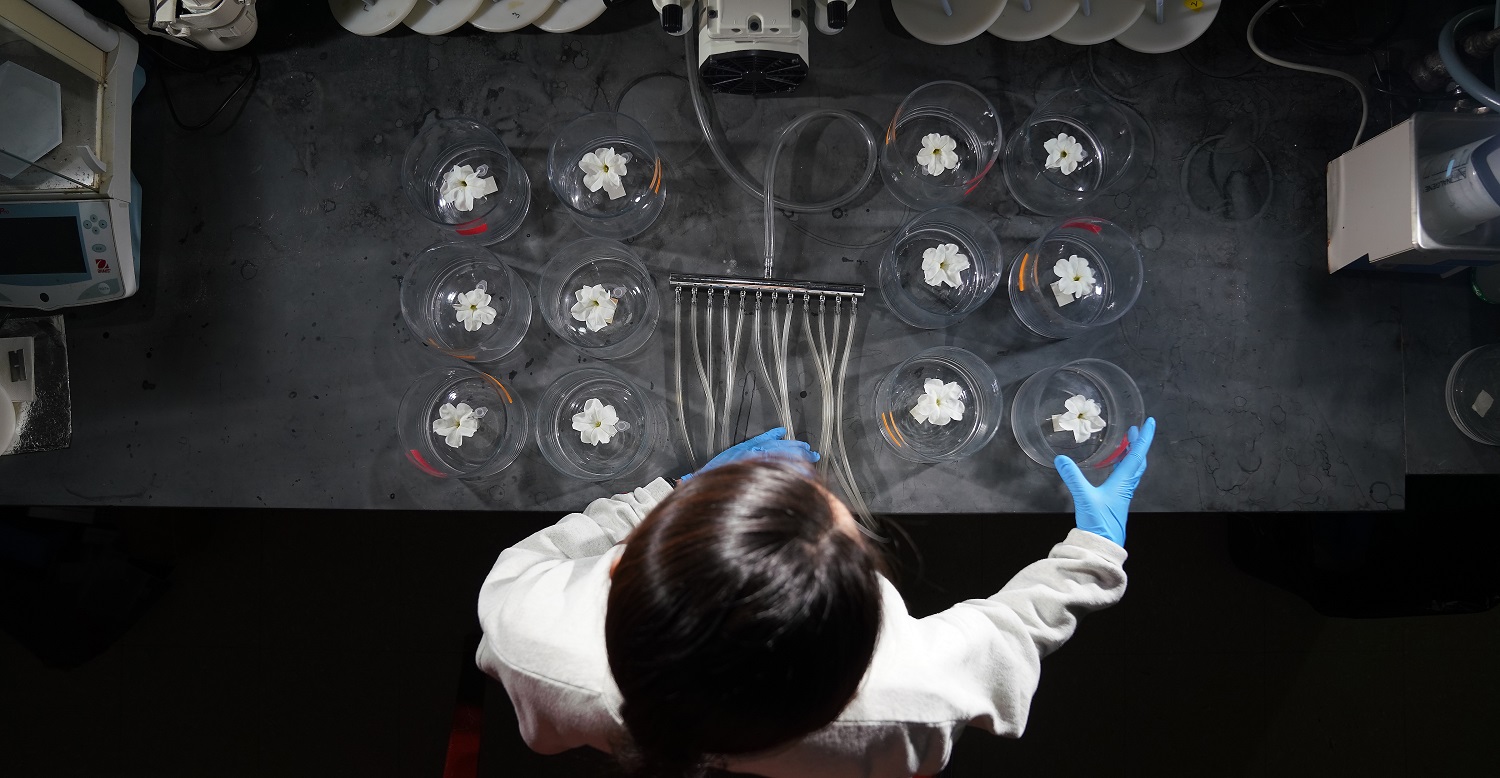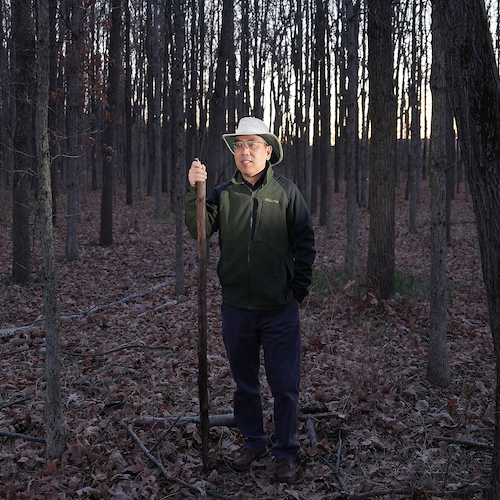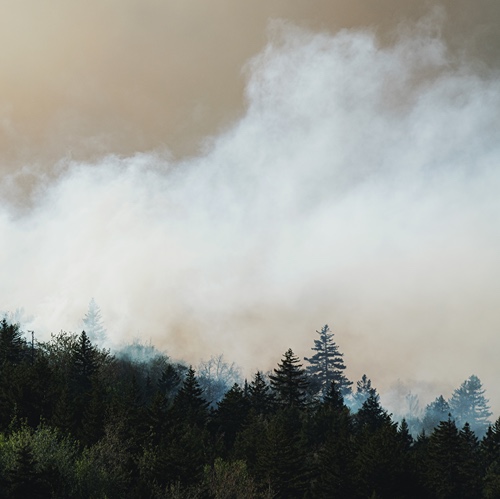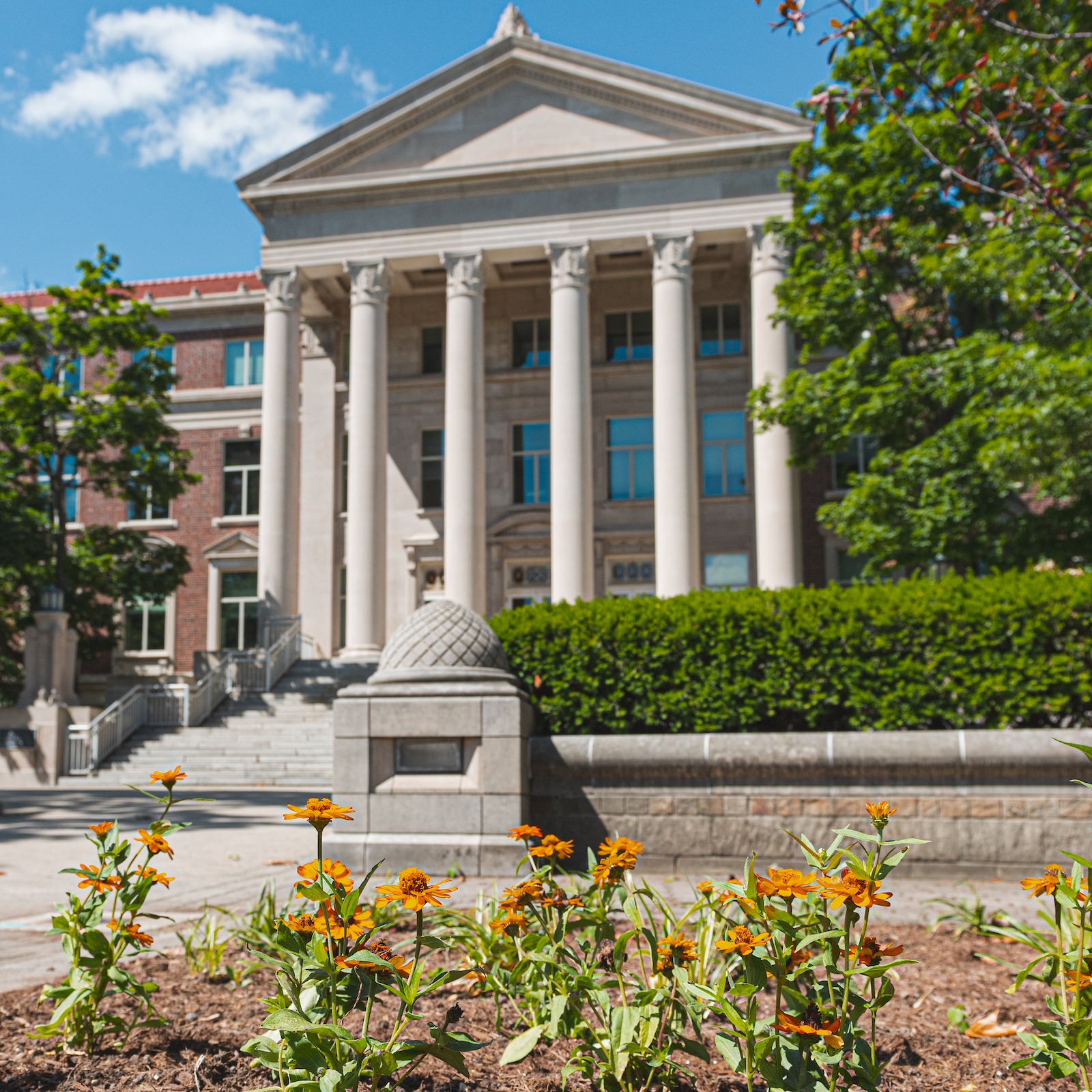Once upon a time, prevailing scientific opinion might have pronounced recently published research in Nature Communications by a team of Purdue University scientists as unneeded. Now, climate change implications have heightened the need for this line of research.
Flowers emit scent chemicals called volatile organic compounds (VOCs). Earlier this year, the Purdue team published the paper identifying for the first time a protein that plays a key role in helping petunias emit volatiles. The article was selected for the “plants and agriculture” section of the journal’s editors’ highlights webpage.
Natalia Dudareva, who led the study, and her longtime collaborator John Morgan had suggested years ago in grant proposals that molecular processes could be involved in VOC emission. Both times the grant reviewers said there was nothing to look for because simple diffusion was the answer.
“We failed twice because people did not believe us,” said Dudareva, director of the Center for Plant Biology and Distinguished Professor of Biochemistry. “We decided we have to have proof that it’s not simple diffusion, that molecular mechanisms are involved.”
The new work builds on findings that the Dudareva-Morgan collaboration announced in 2015 and 2017 showing how biology helps control the release of scent compounds from plants. The latest paper, chiefly funded by the National Science Foundation and the U.S. Department of Agriculture, focuses on how volatiles cross the cell wall, the barrier that separates the cellular interior from a plant’s outermost protective layer, the cuticle.
“We were looking at whether or not there are proteins that facilitate the transport of these small organic molecules across the cell wall layer,” said Morgan, a professor of chemical engineering.
“The best analogy is to the transport of oxygen in muscle tissue by a protein called myoglobin.”
Volatile organic chemicals are small molecules that have low water solubility. The cell wall, however, is a water-filled environment. This slows the diffusion rate of VOCs because their concentrations cannot build up very high.
“What happens is a protein can bind a lot of these molecules inside a non-waterlike cavity, and it improves or increases the net transport rate,” Morgan explained.
 Ji Hee Lee, a graduate student in biochemistry, prepares an experiment to extract floral volatiles from fresh petunia blooms.
Ji Hee Lee, a graduate student in biochemistry, prepares an experiment to extract floral volatiles from fresh petunia blooms. The work has significant practical implications, ranging from the health of the planet to industrial operations. Plants now emit 10 billion metric tons of carbon annually, a quantity that will increase with continued global warming. Floral volatiles also help to protect plants against environmental stresses and are heavily used in the cosmetics industry and in aromatherapy.
“And our diet depends on insect-pollinated plants,” Dudareva said. With global warming, flowers may start blooming earlier, before insects are ready to begin pollination.
The team’s 2015 paper published in the journal Trends in Plant Science reported calculations that had determined the concentration of volatiles needed to sustain the experimentally measured floral emission rate. The concentration reached the millimolar range, a scale that chemists use to quantify substances containing huge numbers of molecules or atoms.
“These compounds will accumulate inside membranes and such high concentration will destroy membranes and destroy the cell,” Dudareva said. This left a clear-cut conclusion: simple diffusion would be impossible.

The initial work had been calculated for snapdragons. But the Purdue researchers focused on petunias for their latest study because, unlike snapdragons, they can be genetically modified to study how particular genes affect the emission process.
“It’s much easier to work with petunias because emission is high, especially during the night,” said Pan Liao, a lead co-author and former Purdue postdoctoral scientist, now an assistant professor of biology at Hong Kong Baptist University. “The emission is strongly regulated in a diurnal pattern.”
Additional co-authors were Itay Maoz, a former Purdue postdoctoral scientist now of Israel’s Agricultural Research Organization; Meng-Ling Shih, PhD 2022, chemical engineering; Xing-Qi Huang, a postdoctoral scientist working in Dudareva’s lab; and Ji Hee Lee, a graduate student in biochemistry. The co-authors contributed a complementary blend of skills and expertise to the work that has become a hallmark of the longstanding collaboration between the Dudareva and Morgan research groups.
Dudareva’s group generated the transgenic plants and handled the cellular biology needed to determine whether a given protein contributes to the volatile emissions. There is no way, however, to detect the level of proteins in a cell or how their concentration changes across a cell wall.
It then fell to Morgan’s group to perform the calculations that quantified the protein contributions and conduct computer simulations to verify the experimental data.
“It’s important to have feedback between the modeling predictions and the actual data,” Morgan said. “Sometimes it starts with the data, then we go do math, and then we go back and compare to the data.”
 Xing-Qi Huang, a postdoctoral scientist in the Dudareva laboratory, tags a petunia that will bloom in the next 24 hours. Researchers select flowers that have just bloomed to extract volatiles at their peak.
Xing-Qi Huang, a postdoctoral scientist in the Dudareva laboratory, tags a petunia that will bloom in the next 24 hours. Researchers select flowers that have just bloomed to extract volatiles at their peak. 




